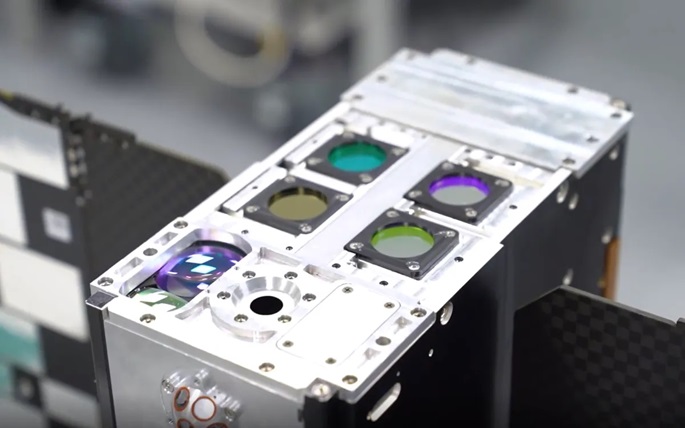Finnish tech goes outer space to protect Earth from asteroid impacts
Published : 09 Oct 2024, 02:54
A hyperspectral camera ASPECT developed by VTT Technical Research Centre of Finland is on board the European Space Agency (ESA) space mission to test deflection technology of potentially hazardous asteroids, said the University of Helsinki in a press release on Tuesday.
The University of Helsinki and Aalto University are responsible for data processing, equipment testing, and the scientific design of the mission.
"The Hera mission will provide valuable information for the next development stages of both planetary defence and asteroid mining," said Antti Näsilä, Principal Scientist of VTT.
VTT, Aalto University and the University of Helsinki are participating in the Hera space mission, which was launched from Florida, USA, on Monday. The mission's purpose is to study the Didymos binary asteroid, which was impacted by NASA's DART probe in September 2022.
The Didymos binary asteroid consists of the mountain-sized Didymos main body (about 780 m in diameter) and the Dimorphos secondary body (about 150 m in diameter), about the size of the Great Pyramid of Giza, which orbits the main asteroid like a moon.
The DART probe collided with the smaller Dimorphos asteroid. Now, the Hera probe will investigate the effects of the collision.
"Just as in war, it is extremely important for planetary defense to know your enemy," said Tomas Kohout, the Science Principal Investigator of the ASPECT hyperspectral camera project.
The Hera mission consists of the main Hera satellite and two smaller probes about the size of a shoebox travelling on board. Once the main satellite reaches its destination, it will release the probes.
This is the first time small, relatively inexpensive probes are about to be sent to orbit another celestial body. One of the two probes will also carry Finnish hyperspectral camera technology.
ASPECT hyperspectral camera developed by VTT will be used to study and analyse the mineral composition of the asteroid Dimorphos. The DART spacecraft impact crater has exposed the asteroid's inner layers, which can now be explored. The hyperspectral camera will reveal the exact mineral composition of the asteroid and allow the reflective properties of the subsurface layers to be compared with those of the asteroid’s surface.
"We will be able to compare how millions of years of exposure to space elements such as radiation or dusty grain impacts affect the surface structure of asteroids. As we learn more about the effects of such space weathering, we will also be able to more accurately detect the most potential asteroids for mining, for example, without expensive test excavations," said Näsilä.
The University of Helsinki has been responsible for the scientific design of the project and for testing the properties of the hyperspectral cameras in laboratory conditions using meteorites.
Aalto University, for its part, is responsible for data processing, scientific operation planning, and related algorithm development so we are ready to obtain key data as soon as the probe arrives to the Didymos asteroid.
"In space, the hardware can no longer be repaired, and the operational time at the destination is only a few weeks. Therefore, careful testing and planning of data collection are paramount to ensure that the equipment meets scientific requirements and that we get all the necessary data from the asteroid in the right format," said Tomas Kohout, who divides his time between Aalto University and the University of Helsinki.
In the future, hyperspectral cameras may also be used by manned space missions to identify water formations on the surface of celestial bodies. The Finnish company Kuva Space has designed the data processing unit of the hyperspectral camera, as well as life-support equipment for both of the CubeSats to monitor their health during the long cruise to the asteroids.
The Hera mission will reach its destination about two years after launch, about 195 million kilometres from Earth. Finnish participants have been heavily involved in the project from the very beginning.


